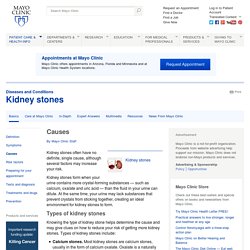

Dialysis. Before dialysis was available, total kidney failure meant death.

Today, people with kidney failure can live because of treatments such as dialysis and kidney transplant. What is dialysis? Dialysis is a way of cleaning your blood when your kidneys can no longer do the job. It gets rid of your body's wastes, extra salt and water, and helps to control your blood pressure. Dialysis II. Dialysis is a treatment that does some of the things done by healthy kidneys.

It is needed when your own kidneys can no longer take care of your body's needs. When is dialysis needed? You need dialysis when you develop end stage kidney failure --usually by the time you lose about 85 to 90 percent of your kidney function and have a GFR of <15. Click here to learn more about the stages of Chronic Kidney Disease and GFR. What does dialysis do? When your kidneys fail, dialysis keeps your body in balance by: removing waste, salt and extra water to prevent them from building up in the body keeping a safe level of certain chemicals in your blood, such as potassium, sodium and bicarbonate helping to control blood pressure Is kidney failure permanent?
Usually, but not always. Kidney Stones Causes. Kidney stones often have no definite, single cause, although several factors may increase your risk.

Kidney stones form when your urine contains more crystal-forming substances — such as calcium, oxalate and uric acid — than the fluid in your urine can dilute. At the same time, your urine may lack substances that prevent crystals from sticking together, creating an ideal environment for kidney stones to form. Types of kidney stones Knowing the type of kidney stone helps determine the cause and may give clues on how to reduce your risk of getting more kidney stones. Types of kidney stones include: Calcium stones. References Goldman L, et al. You Are ... Mayo Clinic is a not-for-profit organization. 3D-Printed Kidneys Take Small Steps Toward Organ Replacements. A model of a 3D-printed kidney drew wild applause when a surgeon first held it up at a TED conference in 2011.

But the dream of creating replacement human kidneys using 3D-printed technology still remains years away, even as the technology has enabled the rise of "bioprinting" aimed at building organs suitable for transplantation. Kidneys represent the human organ in highest demand among the more than 120,000 U.S. patients currently waiting for organ donations. Researchers hope that new generations of 3D printers can use living human cells to build replacement organs layer by layer — especially organs such as livers, hearts and kidneys.
"These are by far the most complex, because you have a lot more cells per centimeter than any other organ, and because you have so many cells that are functionally complex," said Tony Atala, director of the Wake Forest Institute for Regenerative Medicine in Winston-Salem, N.C. Growing Human Kidneys in Rats Sparks Ethical Debate. Researchers say they have developed a new technique that will get more kidneys to people who need transplants, but the method is sure to be controversial: The research shows that it is feasible to remove a kidney from an aborted human fetus, and implant the organ into a rat, where the kidney can grow to a larger size.

It's possible that further work could find a way to grow kidneys large enough that they could be transplanted into a person, the researchers said, although much more research is needed to determine whether this could be done. "Our long-term goal is to grow human organs in animals, to end the human donor shortage," said study co-author Eugene Gu, a medical student at Duke University and the founder and CEO of Ganogen, Inc., a biotech company in Redwood City, California. [The 9 Most Interesting Transplants] Such organs could also be used to test drugs before human trials are started, which would help avoid the risks associated with using untested compounds in people, Gu added. Amazing Medical Conditions: Maple Syrup Urine Disorder. Is it a good idea to drink urine when water is scarce? A Chinese man trapped under a piece of ceiling managed to survive for more than six days after the massive earthquake in the Sichuan province on May 12—in part, reports the Wall Street Journal, by drinking his own urine.

(He says he used "what felt like leaves" to pool his liquid waste.) How long can you survive by drinking pee? An extra day or two, at best. A healthy person's urine is about 95 percent water and sterile, so in the short term it's safe to drink and does replenish lost water. But the other 5 percent of urine comprises a diverse collection of waste products, including nitrogen, potassium, and calcium—and too much of these can cause problems. Many survivors of horrendous accidents and disasters have said they drank their urine to stay hydrated—including Aron Ralston, the man who amputated his own arm to escape a boulder in a Utah canyon in 2003. * Nevertheless, the practice is not widely advised as a survival technique. Got a question about today's news?